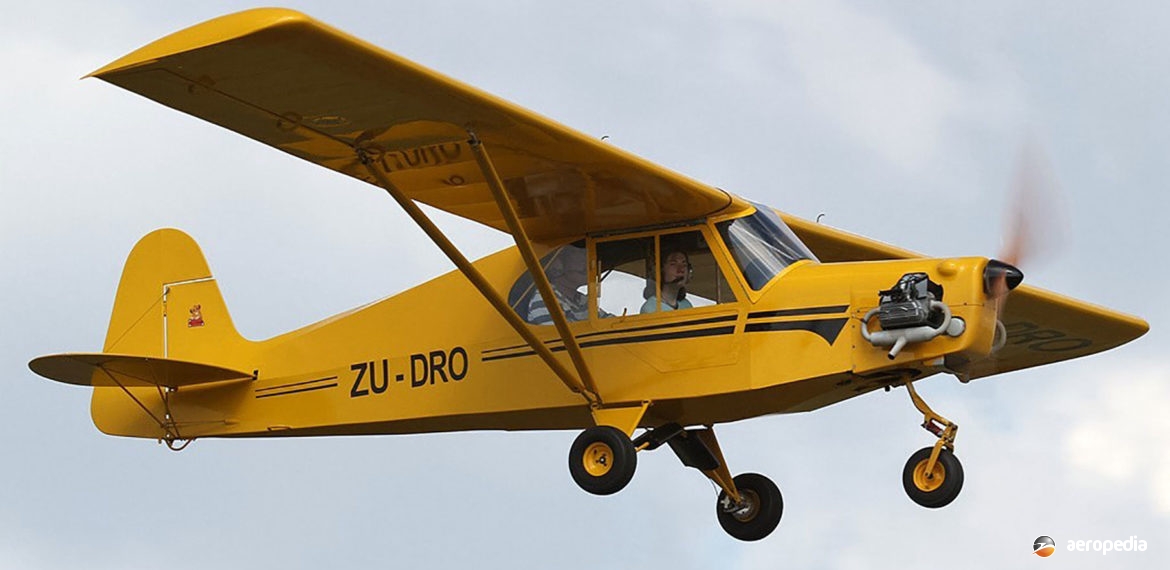Photograph:
Then first Microwings Tri Cubby ZU-DRO in South Africa (G Shephard – MicroWings).
Country of origin:
South Africa
Description:
Two-seat light sport monoplane
Power Plant:
One 75 kw (100 hp) 2000 cc converted Volkswagen four-cylinder horizontally-opposed air-cooled engine
Specifications:
- Never exceed speed: 209 km/h (130 mph)
- Cruising speed with P-prop: 153 km/h (95 mph)
- Range: 805 km (500 miles)
- Endurance: 6 hrs/
- Take-off roll at sea level: 100 m (328 ft)
- Landing roll at sea level: 150 m (492 ft)
- Rate of climb with two on board: 213 m/min (700 ft/min)
- Fuel capacity: 90 litres (20 Imp gals)
- Empty weight: 260 kg (573 lb)
- Luggage: 20 kg (44 lb)
- Loaded weight: 450 kg (992 lb) [microlight] or 500 kg (1,102 lb)[ light aircraft]
History:
The MicroWings Cubby and Tri-Cubby were designed and developed in South Africa by Kobus van Staden and Adam Nagorski. The aircraft is basically a 75% scale replica of the Piper J-3 Cub but uses modern materials and technology. It is produced in two models, the Cubby with a tailwheel, and the Tri-Cubby with a fixed tricycle undercarriage. They are produced in a facility located just outside Trichardt near Secunda, the facility being approved by the South African CAA to manufacture and sell the aircraft. Marketing and sales is carried out by Wynand Rademeyer.
Two engines are usually specified for the aircraft, mainly the converted Volkswagen or the 63 kw (85 hp) Jabiru 2200 driving a Powerfin two-blade ground adjustable or P-Prop wooden fixed pitch propeller. Seating in both models is for two in tandem with dual control sticks operated by push rods. The airframe is of welded steel tube construction with fabric covering. The wing is of aluminium extrusion main spar, with composite ribs, leading edge and wing tips. Fuel is carried in two 45 litre (10 Imp gals) fuel tanks, one in each wing.
The aircraft in South Africa is available as a three-axis microlight or a non type-certified light aircraft and the option to have the aircraft undercarriage interchangeable between tricycle and tailwheel is an option. More than 30 examples have been completed. First of the series seen in this region was a Tri Cubby 19-8447 (c/n AK-05X) registered under RAA regulations.

